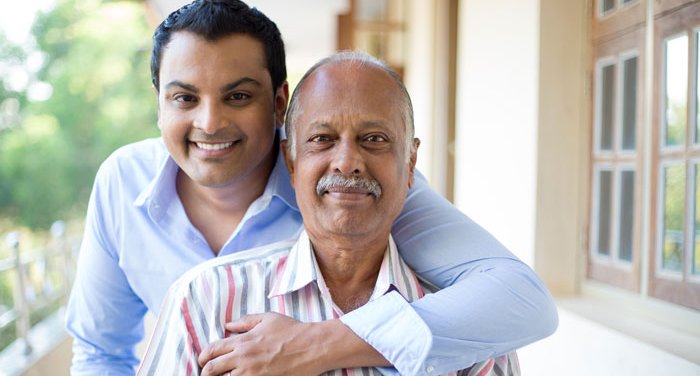
It used to be a classic stereotype: The brother “disappears” as Mom and Dad start needing more help. The eldest sister steps in and has to shoulder the entire burden, never mind her other obligations… Thankfully, that’s changing, and quickly!
Eight years ago, 34% of family caregivers were male. Now that’s up to 40%, amounting to 16 million men taking care of an aging spouse, parent, or friend.
“Caregiving Is Tougher Than Tough”
In honor of male caregivers, AARP has posted several videos of men talking about caregiving. Be sure to check out the hilarious “Caregiving is Tougher than Tough” PSA by Breaking Bad bad dude Danny Trejo.
“This warrior will always be at his father’s side, even if his dad no longer remembers him.…Good luck finding a gym to train for that!”
AARP study
The AARP Public Policy Institute recently released a report, Breaking Stereotypes: Spotlight on Male Caregivers. Drawing on data from its 2015 general eldercare study, researchers learned that, like their female counterparts, male caregivers
- help with finances and medical/nursing tasks;
- assist with personal care: bathing, dressing, feeding, toileting;
- work outside the home while juggling family caregiving responsibilities;
- experience depression and a worsening of their own physical health.
Differences from women
Although there were certainly similarities, there were also differences between the genders.
- Personal care tasks are a challenge. Bathing or toileting a loved one is difficult for all involved—including daughters and wives. Unless the men had been more hands-on as a parent in child-rearing, the personal care tasks were the most daunting for male caregivers.
- Men do not talk about the issues. Male caregivers experience strain from the role, but they are less likely to want to talk about it. As a rule, support groups, even online, were not appealing.
- Younger men bring in outside help. Older men often go it alone. It seems to be easier for men to bring in outside help (37%) than it is for women (27%). Think Meals on Wheels or a home care aide. But there is a generational distinction. Sons appear to reach out to the formal support system more readily. Husbands, on the other hand, are more likely to feel they should do it all themselves.
Ways to help male caregivers
In focus groups, male caregivers identified their strongest need was to get concrete training on the tasks they needed to accomplish. Many were providing complex medical care tasks (tube feedings, wound care, operating equipment such as oxygen machines) even though 72% felt they had not been given any or adequate instruction.
- 58% said they would like to be shown how to perform concrete tasks by a qualified individual.
- 49% would like to have a qualified individual watch them perform the task and give feedback.
- 33% said they would like instructions with pictures of what to do.
How-to videos
Another option to consider is video instruction. YouTube is full of videos that can give instruction and demonstrations for even the most intimate tasks. From safely transferring into the car, to techniques for bathing a person in bed, you can find video how-to’s from reputable companies around the country.

